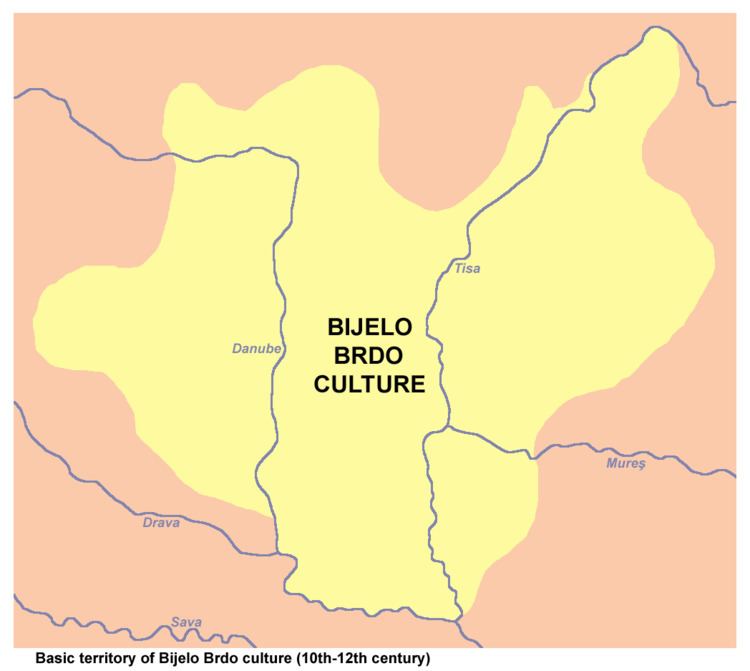 | ||
The Bijelo Brdo culture or Bjelo-Brdo culture is an early medieval archaeological culture flourishing in the 10th and 11th centuries in Central Europe. It represents a synthesis of the culture introduced in the Carpathian Basin by the conquering Hungarians around 900 and of earlier cultures existing in the territory (in present-day Croatia, Hungary, Romania, Serbia and Slovakia) before the Hungarian conquest. Female dress accessories, including "jewellery of plaited wire, two-piece sheetwork pendants, snake-head bracelets and S-shaped temple-reings" (P. M. Barford), are the most characteristic items of the culture. The culture disappeared around 1100, most probably not independently of laws adopted under Kings Ladislaus I and Coloman of Hungary which prescribed the burial of dead in graveyards developed near churches.
Initially it was thought that the poorer Hungarian(Magyar) gravesites were Slavic and that only the rich horse-warrior burials were Hungarian. This view was challenged in the 1940s and is now rejected by Hungarian scholars, who see the poorer burials as Magyar commoners, such as Béla Szőke.
It is named after an archeological site, a medieval graveyard found near the village of Bijelo Brdo, Croatia and excavated since 1895. The dating at 7th Century of Site 1 was established by Zdenko Vinski.
According to the Russian archaeologist Valentin Vasilyevich Sedov, the basic territory of Bijelo Brdo culture included territory of present-day Hungary, southern Slovakia and part of Serbian Vojvodina.
